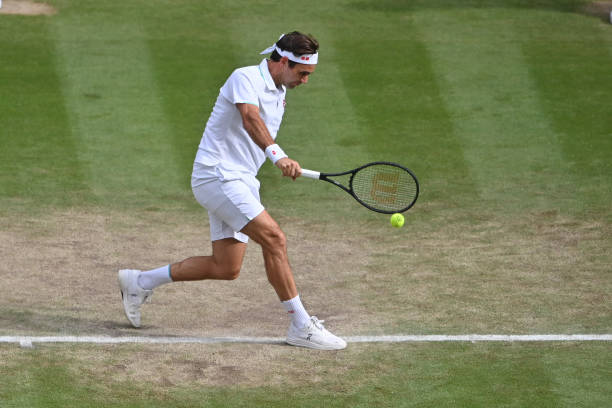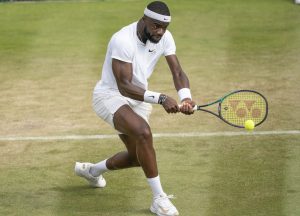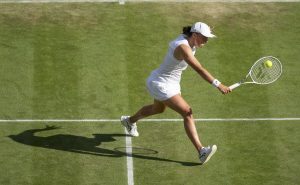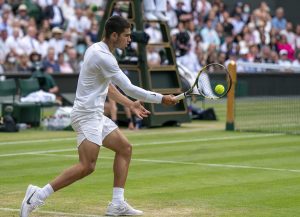For much of the 20th century – so, for most of the history of professional sport – art and sport were widely regarded as being almost mutually exclusive. Indeed, it was a commonly held belief, especially in the West, that it was almost impossible for someone to love both equally. Much of the British education and class system was predicated on the belief that sportsmen (of course professional sportspeople were almost exclusively male for most of the 20th century) and artists were so fundamentally different that never the twain could meet. And even more recently, Frasier, perhaps the greatest television sitcom ever, was largely built on the conflict between a sports-mad father and a sports-loathing son.
Thankfully, in the 21st century, that old and mainly artificial division between art and sport has largely been erased, such that it is now perfectly possible for someone to admit to loving both art and sport equally. Even more importantly, it is now widely accepted that the very greatest sport can attain the quality of art. At his peak with his 2004 Arsenal Invincibles side, Arsène Wenger openly talked about the finest football being a form of art. However, with all due respect to Wenger, his greatest Arsenal team and any other particularly graceful sportspeople, the greatest sporting artist ever is undoubtedly Roger Federer.
It helped, of course, that Federer played tennis, which has always been the sport for aesthetes. That was probably part of the reason that it was the last major professional sport to become fully professional (with the exception of rugby union, which does not have the global reach of tennis); it was felt that tennis was such a uniquely pure, expressive and individual sport that playing it was its own reward and did not require remuneration. And it is certainly the sport most beloved by artists, even great artists.
Debussy wrote a ballet, Jeux (Games), based on a tennis match; Janus Metz Pedersen’s sublime Borg-McEnroe (2017) is probably the most artistic film ever made about sport; and perhaps the most important line in Hilary Mantel’s entire Wolf Hall trilogy of novels about Thomas Cromwell comes when Cromwell muses, near the end of the trilogy, that, “It’s all tennis, isn’t it?”, directly comparing the continuous exchange of words and ideas between people with the exchange of shots between tennis players.
Nevertheless, despite the general adoration of tennis by artists, Federer always enjoyed special attention by them. Indeed, he almost has an artistic oeuvre of his own, consisting of great essays and books about him. The best of them are the late David Foster Wallace’s famous essay, Roger Federer as Religious Experience (2006), and William Skidelsky’s remarkable memoir, Federer and Me: A Story of Obsession (2015). Both Foster Wallace and Skidelsky were fine junior tennis players, particularly Foster Wallace, so they knew whereof they wrote when they marvelled at the ease with which Federer played what is probably the most technically demanding of sports.
As both Foster Wallace and Skidelsky argued, Federer’s game was truly artistic. It was a unique combination of utterly fluid movement (Charlie Chaplin once said that the most beautiful thing he had ever seen was Helen Wills Moody’s movement on a tennis court, but he never saw Federer); almost impossibly imaginative shot-making (he really announced himself to the world with his running half-volley against Andy Roddick in the Wimbledon semi-final of 2003, which was a shot that most tennis commentators had never imagined before, let alone seen); and, crucially in comparison with his main rivals Rafael Nadal and Novak Djokovic, endlessly attacking tactics, whether he played serve and volley (as he did much more at the start of his career) or a baseline-dominated game.
That Federer is the most graceful tennis player ever is now a truth that is almost universally acknowledged, but arguably he is the most graceful sportsperson ever. Certainly, it is impossible to think of another sportsperson who has hit the twin sweet spots of being simultaneously beautiful to watch and extraordinarily successful. In football, Zinedine Zidane is perhaps the closest equivalent, but even he did not achieve a level of success, at either club or international level, that compares with Federer’s 20 Majors in 15 years (2003-2018).
In golf, Seve Ballesteros could match Federer’s flair but not his sustained level of success, as he only won a relatively paltry five Majors compared to Federer’s 20; in cricket, David Gower is often described as the most elegant batsman ever, but he could not reproduce his best form against the great West Indies bowling attack of the late 1970s and 1980s. In the “contact sports”, such as rugby union, rugby league or American football, only Barry John ever attained a Federer-like level of grace and ghost-like movement, and even then just for a tantalisingly brief period (principally in 1971 on the British and Irish Lions’ only winning tour of New Zealand).
A year ago, after Novak Djokovic narrowly failed to win the Calendar Grand Slam when he lost to Daniil Medvedev in the US Open Final, I wrote that Federer should retire while he was still at least tied at the top of men’s tennis with Djokovic and Nadal on a total of 20 Majors . Foolishly, Federer did not heed my advice! Subsequently, he has been surpassed statistically by both Nadal and Djokovic, who have now won 22 and 21 Majors respectively, and they may yet win more.
However, what Nadal, Djokovic, nor any other tennis player, including the great new star of the sport Carlos Alcaraz, will ever be able to do is to surpass Federer stylistically. It is simply impossible to imagine that any future tennis player could ever combine grace and power in the way that Federer did, not least because the arrival of Alcaraz has probably shifted tennis into a new era, where power will always supersede grace. (Dave Grohl once called Queen “The Beatles on steroids”; similarly, Alcaraz is a pumped-up, powered-up version of Federer at his best.)
Consequently, even if he is no longer “The GOAT (Greatest of All Time)” in terms of the number of Majors he has won, Federer will always be “The GROAT (Graceful-est Of All Time)”. He is not only the most aesthetically pleasing tennis player there has ever been but the most aesthetically pleasing sportsperson there has ever been. No-one ever did more to elevate mere sport to the level of great art, and for that those of us who love both sport and art equally will always adore and celebrate him.
Main photo:
Embed from Getty Images






